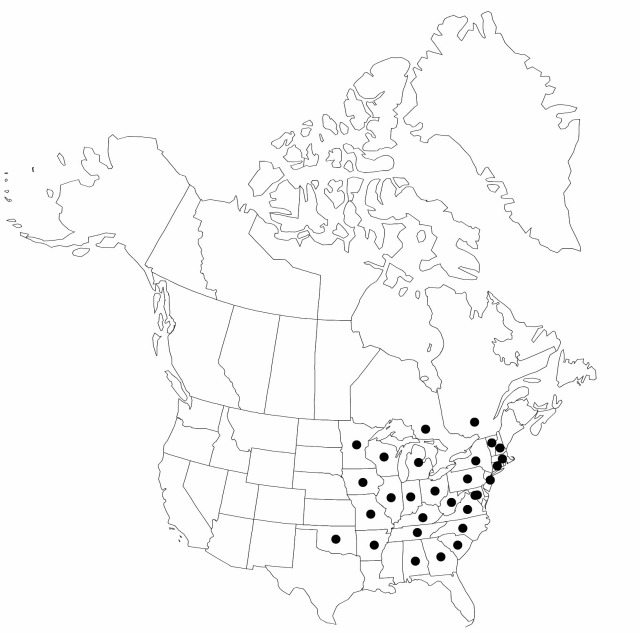Carex albursina
Bull. Torrey Bot. Club 20: 284. 1893.
Culms densely tufted, lateral, ascending or lax to decumbent, distinctly winged, 10–62 cm × 2–2.4 mm; basal sheath light-brown to brown, the proximal frequently wine-red or purple, small, triangular. Leaves: sheaths 2–15 mm; blades ascending, midrib well developed, 2 lateral-veins conspicuous, slightly more so than other veins, flat, thin, 10–35 cm × 10–38 mm, widest leaf 13–38 (–62) mm wide, blades of overwintering leaves smooth. Inflorescences: peduncles of proximal spikes to 5.8 cm; of terminal spike absent. Bracts 1.4–2.6 cm × 3.9–2.2 (–3.2) mm; bract blades of distal lateral spikes lanceolate or narrowly lanceolate, wider than spikes, concealing them, widest bract blade of distalmost lateral spike (2.9–) 3.2–8.3 mm wide. Spikes 4 (–5) per culm; lateral spikes 6–36 × 3–4.2 mm; terminal spike erect, linear, 4–18 × 1.2–1.6 mm, often hidden by distal 2 pistillate spikes and distal bract blade, frequently exceeded by distal 2 pistillate bracts. Pistillate scales oblong, 2.8–3.2 × 1.4–2 mm, apex obtuse or truncate, awnless (sometimes mucronate). Staminate scales oblong-ovate, 2.8–3.2 × 1.4–2 mm, margins hyaline, apex obtuse. Anthers 2–2.2 mm. Perigynia 3–20 per spike, strongly to loosely overlapping, erect or ascending, obovate, 3–4.2 × 1.8–2.1 mm; beak abruptly bent, 0.3–0.6 mm. Achenes ovoid, 2.5–3.8 × 1.6–1.8 mm. 2n = 44.
Phenology: Fruiting spring.
Habitat: Moist deciduous or deciduous-evergreen forests, on steep slopes, or often, around limestone escarpments, washes, slides, or cave entrances
Elevation: 100–1200 m
Distribution

Ont., Que., Ala., Ark., Conn., D.C., Ga., Ill., Ind., Iowa, Ky., Md., Mass., Mich., Minn., Mo., N.H., N.J., N.Y., N.C., Ohio, Okla., Pa., S.C., Tenn., Vt., Va., W.Va., Wis.
Discussion
Selected References
None.
Lower Taxa
"shortened" is not a number."wider" is not a number.
